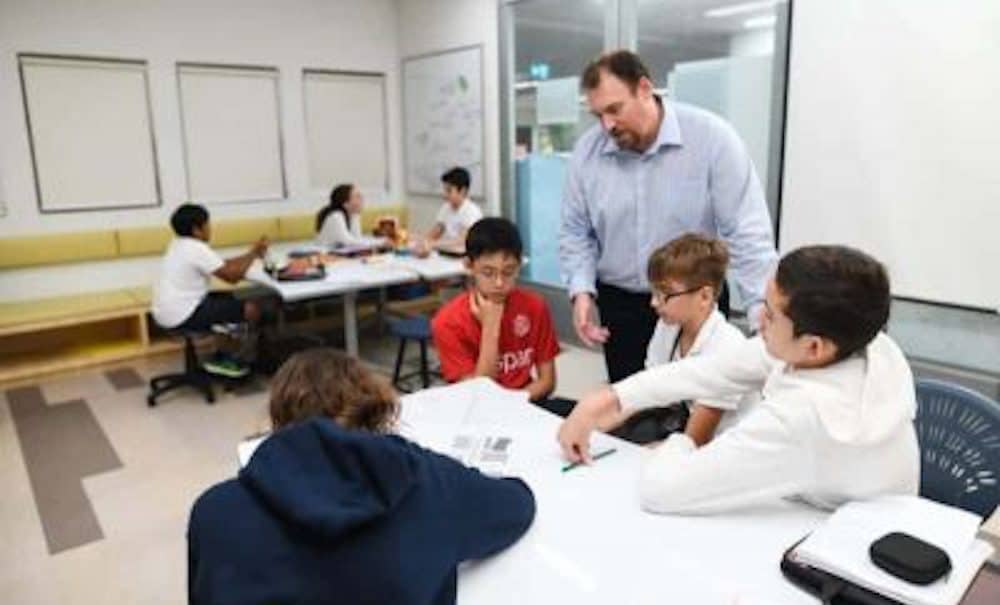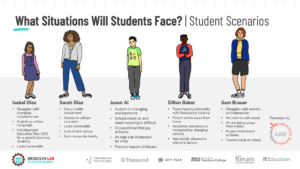How to Set Middle Schoolers On a Long-Term Path of Success

By: Rachel Graham
Middle school is a pivotal time in our lives. In fact, new research shared by organizations like the University of Virginia, the Alliance for Excellent Education, the National Academies of Science, and the Search Institute reiterates the importance of supporting students’ development in the middle grades. With this time period being second only to birth to three years in brain development, it’s an important window of opportunity for maximizing positive development. Not to mention, it’s a critical point for young people as they begin to chart their path to college, career, and successful adulthood.
Because middle school is an important time for reinforcing positive development, we need to ensure that we’re providing middle schoolers the necessary skills and resources to set them on a long-term path to success. Providing a curriculum that encompasses career exploration, understanding your academic standing, self-advocacy, and high school selection in middle school is key to setting students up for success.
For example, over 100 elementary and middle schools within the Chicago Public School (CPS) district have implemented a curriculum to help foster self-advocacy and student readiness.
In CPS, the freshman on-track metric is used as an indicator of high school and college success, and further research has shown that 8th grade GPA and attendance are the strongest predictors of positive on-track metrics in 9th grade. Knowing that the 8th and 9th grade years are key for future success, CPS started to focus on preparing students as early as 6th grade.
Leveraging its district-wide open enrollment for high school, middle schools within the district have adopted programs to help students better prepare for and find an ideal high school that pairs with their career interests.
Some of the programming includes career days to map out student interests, high school fairs where middle schools can learn what high schools have to offer, information seminars to inform parents about their child’s options, and sessions explaining the importance of a GPA. And, it’s working.
CPS teachers and school counselors who are currently a part of this work have expressed that their middle school students are better prepared for high school, and they are being “more intentional about having conversations around postsecondary options” (School Counselor at West Park Academy). In fact, it’s reported that more 8th graders in CPS are transitioning into higher quality high school programs that align with their unique interests as a result of the initiative.
Educators working in the middle school space have an opportunity to increase student engagement at a time when research shows that young people can often disengage from school. Teachers can help students connect what they are doing each day in the classroom to their future goals by bringing in real-world experiences like college trips and career exposure. For instance, research from the University of Virginia shows:
“A middle school curriculum should invite students to meaningfully explore their myriad identities and speak to the diversity of their peers. It should also include opportunities for young adolescents to explore postsecondary education and career options, ensuring they can navigate the many possibilities of their future selves.” (Youth-Nex Center at the University of Virginia, Remaking Middle School)
When it comes to postsecondary planning, school systems and staff should continuously ask themselves if they are truly providing opportunities for all students to see the many different options that exist beyond high school. Many students who are in elementary school today will have jobs that do not even exist yet, so it’s more important than ever to help young people engage in self-exploration, positive risk-taking, and postsecondary exploration to help them form creative visions for a happy and successful future.
It’s also important for schools to provide the space for middle school staff to discuss these important topics with their students in order to help them build connections between middle school, high school, college, and their career. In a district like CPS where students apply for up to 20 different high school programs in 8th grade, schools are asking adolescents to make a choice that could alter the direction or focus of their entire educational path.
This means that we need to help increase students’ awareness of topics like Career & Technical Education (CTE) and dual-credit programs, as well as different postsecondary pathways so that students feel empowered with the information they need to make these choices.
Middle school matters and we can start setting students up for long-term success if we start investing in them today.
For more, see:
- Mythbusters: Flexible Learning in Middle School
- Podcast: Ed Hidalgo on Introducing Youth to The World of Work
- Wall-to-Wall Project-Based Middle School Learning
Rachel Graham is the Director of Programs for the Lefkofsky Family Foundation and has built out Success Bound, a free program with a suite of resources that is designed to foster skills like self-advocacy, time management, and vision setting. Through their partnership with Chicago Public Schools, Rachel and her team have supported more than 100 schools working to prepare over 10,000 6th through 8th-grade students to be successful in the transition to high school, and beyond.
Stay in-the-know with innovations in learning by signing up for the weekly Smart Update.






0 Comments
Leave a Comment
Your email address will not be published. All fields are required.